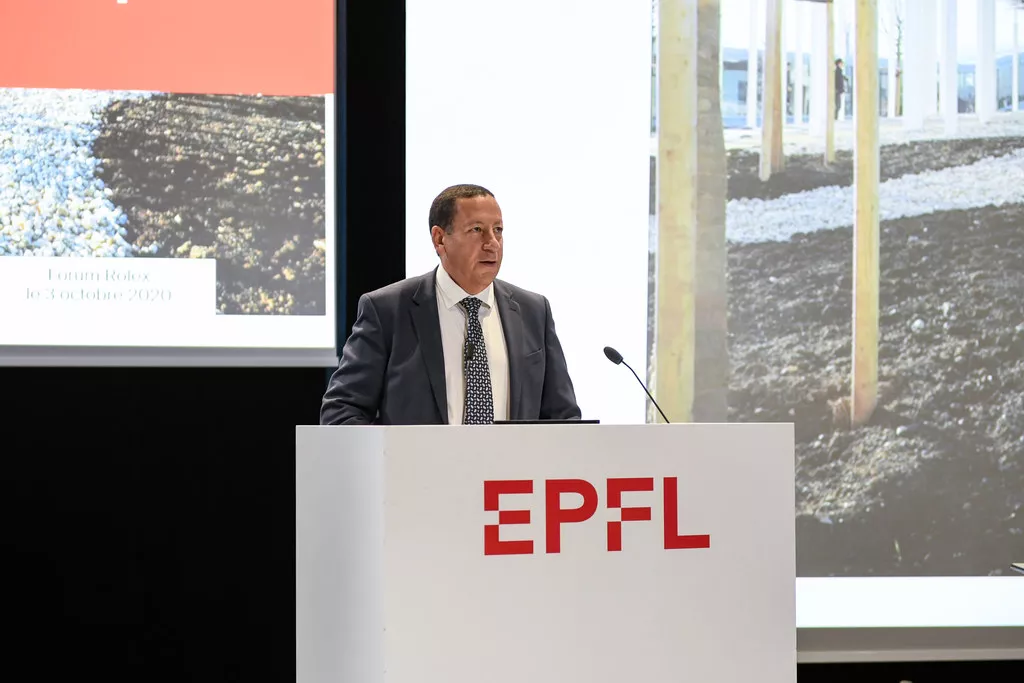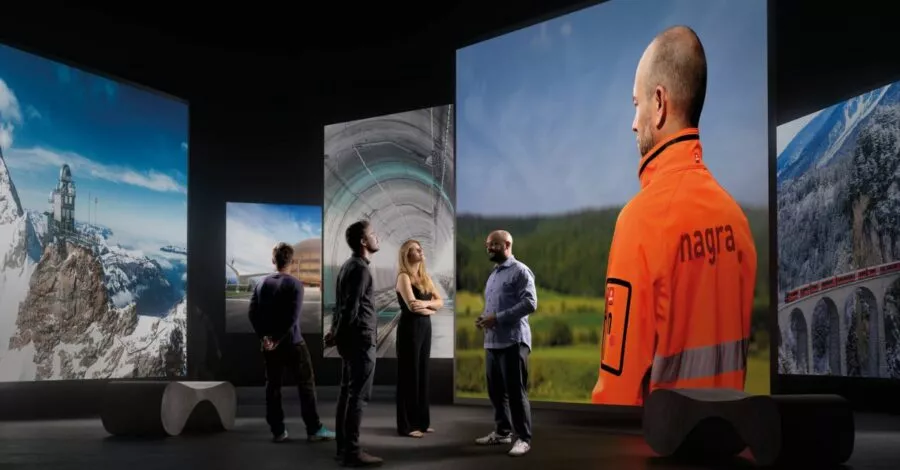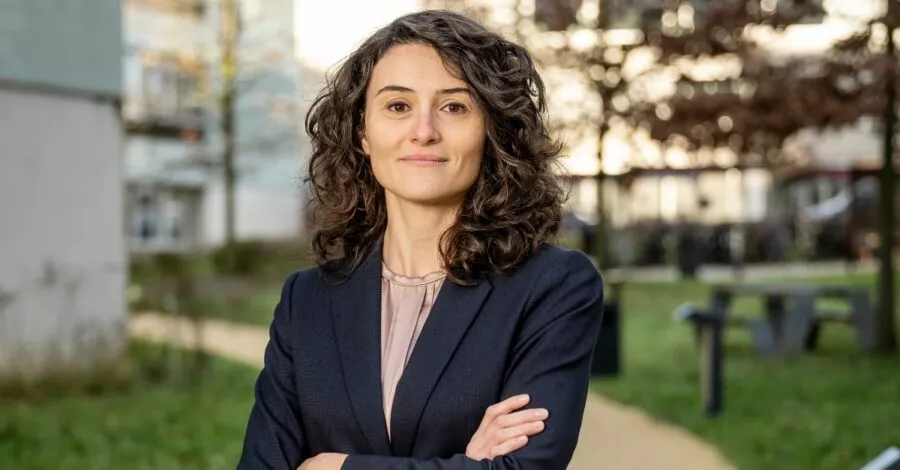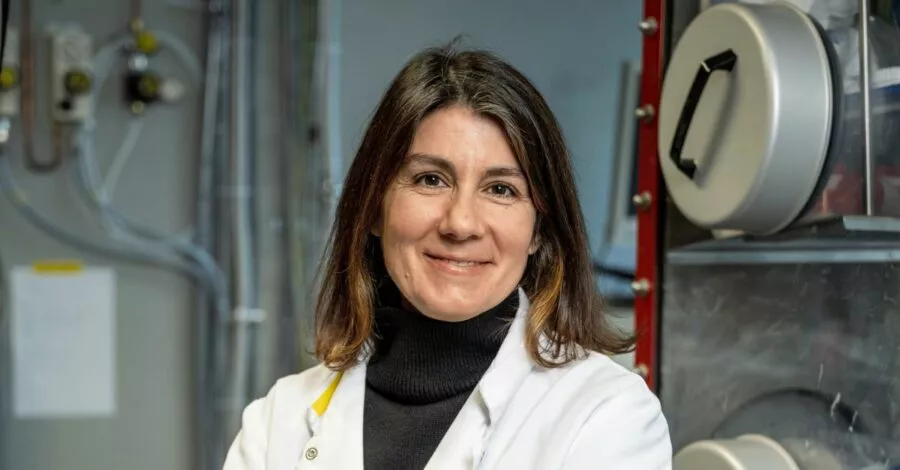
The role of science
«The geology has spoken.» This was the justification for the siting proposal for Switzerland's deep geological repository. There is a lot of science behind this simple sentence. Lyesse Laloui, Full Professor and Director of the Soil Mechanics Laboratory at the EPFL Lausanne, talks about his motivation to make life better for us all, the research collaboration with Nagra and the role of science in the project of the century for a deep geological repository.
Mr. Laloui, you were recently awarded an honorary doctorate from Heriot-Watt University in Scotland for your commitment to sustainability. What issues are you particularly interested in?
I am interested in issues that contribute to making all of our lives better. How can we extract more energy from the underground? How can we use the underground as an energy store? Or: How can we safely dispose of or store unwanted substances such as radioactive waste or CO2 underground? I am motivated by the fact that our research has a positive impact on the quality of human life.
Since 2005, you have been conducting joint research work with Nagra on the disposal of radioactive waste. In which areas do you conduct this collaborative research?
The Soil Mechanics Laboratory at the EPFL Lausanne conducts research on various geomaterials, namely soils or rocks. Our goal is to better understand how different materials behave under different conditions. What effects do different pressures or temperatures have on a rock? The better we understand such processes, the more technical possibilities are open to us.
Can you give us a concrete example?
Nagra wishes to build the repository in a clay rock called the Opalinus Clay. Deep boreholes have been drilled to bring Opalinus Clay cores to the surface, which we and other universities have studied in the laboratory. This has improved our knowledge of how the Opalinus Clay behaves at depths of 800 to 900 metres. Today, we know that it is possible to construct tunnels safely in the Opalinus Clay, even at such great depths, without damaging the rock too much. A few years ago, there were still great uncertainties in the field of construction technology at such depths. In this case we were able to contribute to creating a solid scientific data basis.
You conduct research in different areas with different partners and organisations. Does the collaboration with Nagra differ from your other collaborations?
I would describe the research with Nagra as exceptional, because we go through a whole process here: We receive rock samples from Nagra, which we analyse in the laboratory. We then develop a model based on the collected data and test this model in large-scale experiments – for example, in the Mont Terri Rock Laboratory where research has been conducted in the Opalinus Clay for many years. The fact that we are involved in every step of the research is different from other cases. We have also been working with the same Nagra scientists for many years. This continuity is also special and very valuable for long-term knowledge-building.
In your opinion, what has to be in place for the project of the century for a deep geological repository to be a success and where do you see the role of science?
In my opinion, the project is a success so far. This is because a lot of research is being done on the safety of the repository or how it will be constructed in the future. The latest research findings are constantly being incorporated into the project. When the repository is built in around 20 years, this should be done using proven technical procedures based on the latest scientific findings. Science can ensure throughout the entire duration of the project that the repository is constructed, operated and sealed in accordance with the latest research. This is where I see the role of science.
About Lyesse Laloui
Lyesse Laloui is Full Professor at the EPFL in Lausanne Switzerland where he is Director of the Soil Mechanics Laboratory and the Civil Engineering Section. Laloui is a leading scientist in the field of environmental geomechanics, geotechnical and environmental engineering and the mechanics of multiphase, porous materials. He has written and edited 13 books and published more than 360 peer reviewed papers; his work has been cited more than 9000 times. Two of his papers are among the top 1% in the academic field of engineering. Laloui has received multiple awards, delivered keynote lectures at over 40 international conferences and is a frequent source of expertise for Swiss and international news outlets.
Source: https://www.epfl.ch/labs/lms/prof-lyesse-laloui/
Similar articles
What does Switzerland think about the deep geological repository?
Switzerland is confident that it can realise the project of the century of deep geological disposal. A recent, representative survey shows that acceptance is high across the whole of Switzerland and in the affected region.



